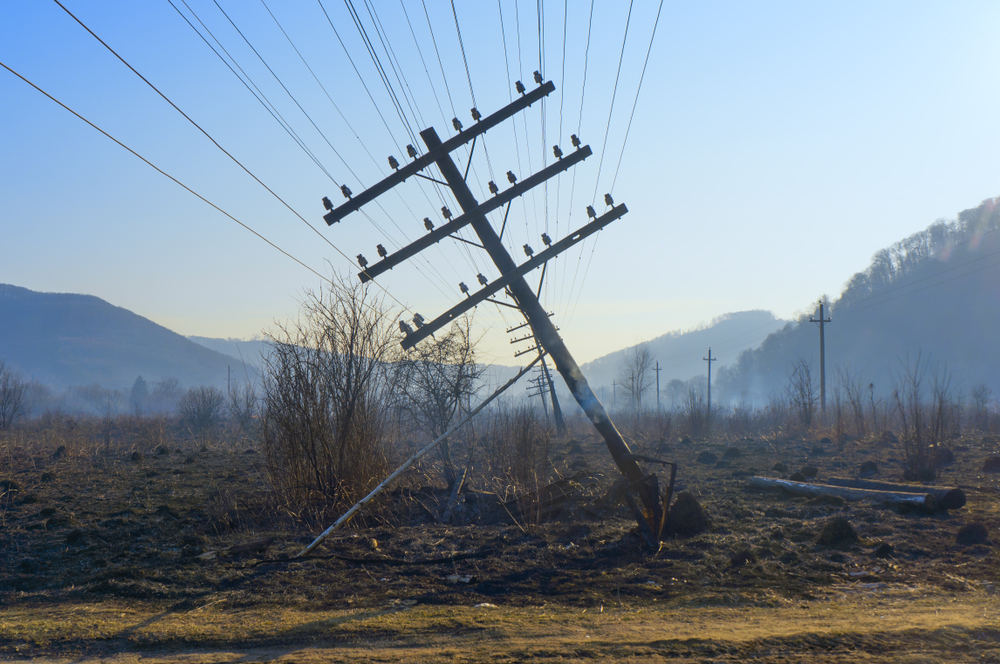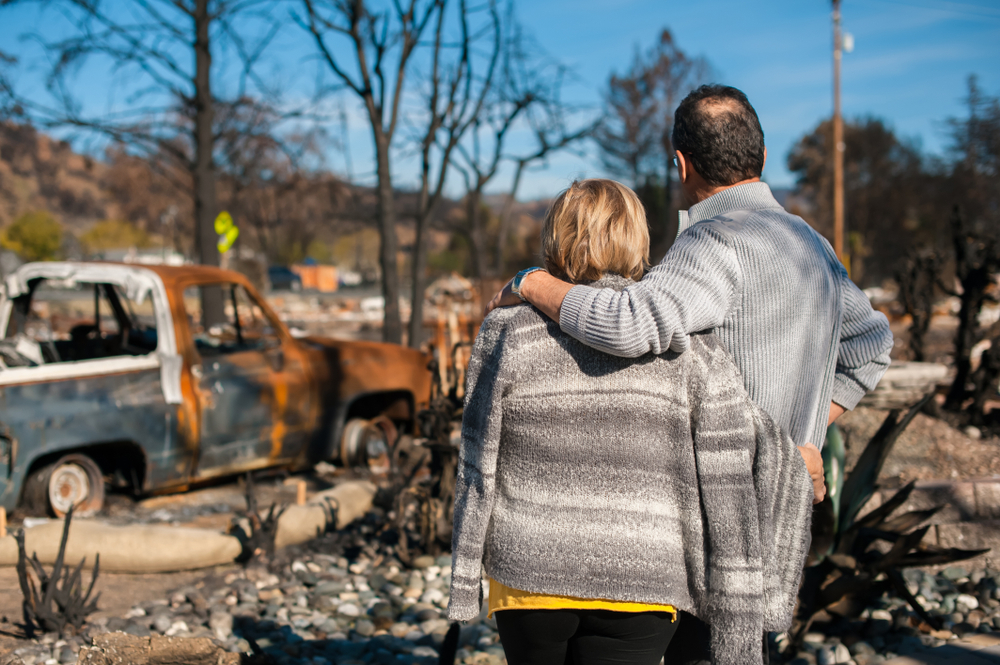
How to Document Property Damage for Claims
A California Wildfire Guide to Stronger Insurance Claims
Start With Safety
When wildfires sweep through California, the aftermath can feel overwhelming. Your first priority is always your safety and the safety of your loved ones. Once officials say it’s safe to return, documenting your property damage is a crucial step for insurance claims and legal recovery. In a state where disasters like wildfires are a real threat, creating a clear record of your losses makes all the difference when dealing with insurance companies.
If you have lost your home or business to fire, you may also face related issues like smoke damage, evacuation costs, and even insurance coverage denials. Understanding how to document property damage after a wildfire can help you recover faster and more completely.
What Counts as Property Damage?
Property damage includes harm to your house, buildings, vehicles, fences, and personal belongings caused by wildfire, smoke, or firefighting efforts. Damage may be obvious, like burned walls, or harder to spot, such as hidden smoke infiltration or melted wiring.
It’s important to know that California law covers not just total loss, but also partial damage, contamination, or loss of use due to mandatory evacuations. If you’re unsure whether your situation qualifies for a claim, reviewing California property damage lawsuit basics can help you understand your rights.
California Laws and Deadlines
California’s insurance regulations require homeowners’ policies to cover fire and smoke damage. Under state law, you generally have a set time (often one year, but sometimes longer during state emergencies) to file a claim. The California Department of Insurance also sets guidelines for how claims must be handled, including time frames for insurers to respond.
If you feel your insurer is delaying or underpaying, California protects you from bad faith insurance practices. You should also be aware of deadlines for filing lawsuits against utilities if your fire was caused by utility negligence.
First Steps After a Wildfire
After emergency crews say it’s safe, take these actions to begin your documentation:
- Photograph all exterior and interior damage before you move or clean anything.
- Make a written inventory of damaged property.
- Keep receipts for emergency repairs, hotel stays, or evacuation expenses.
- Notify your insurance company right away about your loss.
- Save any communications with your insurer or adjuster.
For step-by-step advice, our article on recovering full compensation for fire-damaged homes provides deeper insights.
Take Clear Photographs
Photographs are your strongest evidence. Use your phone or camera to capture:
- Wide shots showing the overall damage to each room or building.
- Close-up photos of specific damaged items, including appliances, electronics, or furniture.
- Photos of exterior structures, landscaping, outbuildings, and vehicles.
- Images of smoke or water damage (look for stains or residue).
- Pictures of serial numbers, model numbers, and manufacturer labels.
Back up your images to email or cloud storage. This ensures you’ll have copies even if your device is lost or damaged.
Create a Written Inventory
A detailed inventory helps you prove the value of your loss. For each item, note:
- Description of the item (brand, model, color, size).
- Approximate purchase date and cost.
- Condition before the loss.
- Where you bought it, if known.
If you have receipts, warranties, or credit card statements, include these with your inventory. Even if you don’t have proof of purchase, your own descriptions and photos can carry weight.
Save All Receipts
Keep every receipt related to your fire loss. This includes:
- Emergency lodging and meals.
- Temporary repairs (boarding windows, tarping roofs).
- Cleanup supplies or services.
- Replacement clothing or essentials.
- Costs for evacuation or pet boarding.
If your home is unlivable, your insurance may cover “additional living expenses.” Documenting these expenses is vital to maximize your recovery.
Video Can Strengthen Your Claim
A walkthrough video of your property, both before and after the wildfire, can tell the story of your loss. Narrate what you see, mention damaged features, and open closets or cabinets to show contents.
If you made a home inventory video before the fire, share it with your insurer. If not, your post-fire video is still powerful evidence.
Collect Official Reports
Request copies of:
- Fire department incident reports.
- Cal Fire or local fire marshal assessments.
- Utility company notifications (if the blaze involved electrical lines).
- Any code enforcement or city inspection reports.
These documents support your claim and may be needed for legal action against utilities or third parties involved in the fire’s origin.
Work With Your Insurance Adjuster
When your adjuster visits, walk through the property together. Point out all visible and hidden damage, and don’t agree to a repair estimate on the spot if you’re unsure.
Take notes during all adjuster meetings. If you disagree with an estimate, you have the right to request a second opinion or hire your own expert. Learn more about disputing low insurance payouts.
Watch for Delays or Denials
Insurance companies in California must act in good faith. If you encounter unreasonable delays or denials, you may have a claim for bad faith practices. Save every letter, email, or voicemail and write down the dates of your communications.
When Legal Help Matters
Sometimes property damage claims are denied or underpaid, or you may have complex losses like business interruption or wildfire-related wrongful death. In these cases, legal guidance can make a difference.
Attain Law attorneys are experienced in wildfire property damage, insurance disputes, and holding utilities accountable for negligence. We help Californians build strong claims and recover what they deserve.
Your Action Checklist
- Make sure your family is safe before returning.
- Take photos and videos of all damage.
- Prepare a detailed written inventory.
- Collect and organize all receipts.
- Request official reports from fire authorities.
- Notify your insurer and keep a copy of all communications.
- Don’t accept quick settlements without reviewing the details.
- Reach out for legal advice if you encounter problems.
Closing Reassurance
Wildfires are devastating, but you don’t have to face the aftermath alone. Careful documentation is your best defense when seeking fair compensation. If you have questions or need help with your property damage claim, contact us today for a free consultation or call (888) 970-8627. Attain Law is here to support you every step of the way.
Frequently Asked Questions about Documenting Property Damage Claims
What should I photograph when documenting wildfire property damage in California? Photograph all damage inside and outside your home, including wide shots, close-ups of specific items, smoke damage, and serial numbers when possible. Back up your photos digitally to ensure you have copies.
How long do I have to file a property damage claim after a California wildfire? You usually have one year from the date of loss to file an insurance claim, but deadlines may be extended during declared emergencies. Check your policy and contact your insurer quickly to preserve your rights.
What documents help support my California property damage claim? Helpful documents include a written inventory, receipts, photos, videos, fire department reports, and records of all communication with your insurer. Official reports from Cal Fire or code enforcement can also strengthen your case.
What if my insurance company denies or delays my fire loss claim? California law protects you from bad faith insurance practices. If your claim is unfairly denied or delayed, you can file a complaint with the California Department of Insurance or seek legal advice.
Does my insurance cover expenses like hotel stays during wildfire evacuation? Most homeowner policies in California cover 'additional living expenses' if your home is uninhabitable due to wildfire. Save all receipts for lodging, meals, and related costs to support your claim.
Disclaimer: This is an advertisement. The information provided is for general purposes only and is not legal advice. Consult a qualified attorney for your specific case. Attain Law cannot guarantee outcomes, as results vary by situation.
Browse Other Articles for "Property Damage" in California:
Start Your FREE Consultation
Complete the form for a Free Consultation. No upfront fees, swift action, and we’re only paid when we succeed for you.
Why Choose Attain Law?
- No Upfront Costs
- We operate on a contingency fee basis—you pay nothing unless we win your case.
- Personalized Attention
- Every case is unique. We tailor our strategies to fit your specific situation.
- Proven Track Record
- Our firm has successfully recovered millions for our clients.
- Statewide Representation
- Based in Woodland Hills, we serve clients throughout California.
Justice Is One Step Away
Ready to turn your struggle into strength? At Attain Law, we’re here to take on your fight—whether it’s a car accident, a dangerous drug, or a workplace injury gone wrong. One call starts it all, and we’re with you every step, no upfront cost required.
- Free Case Review
- No Fees Until Victory
- Millions Recovered
- Personal Strategy
- California Coverage
- Relentless Case Pursuit



